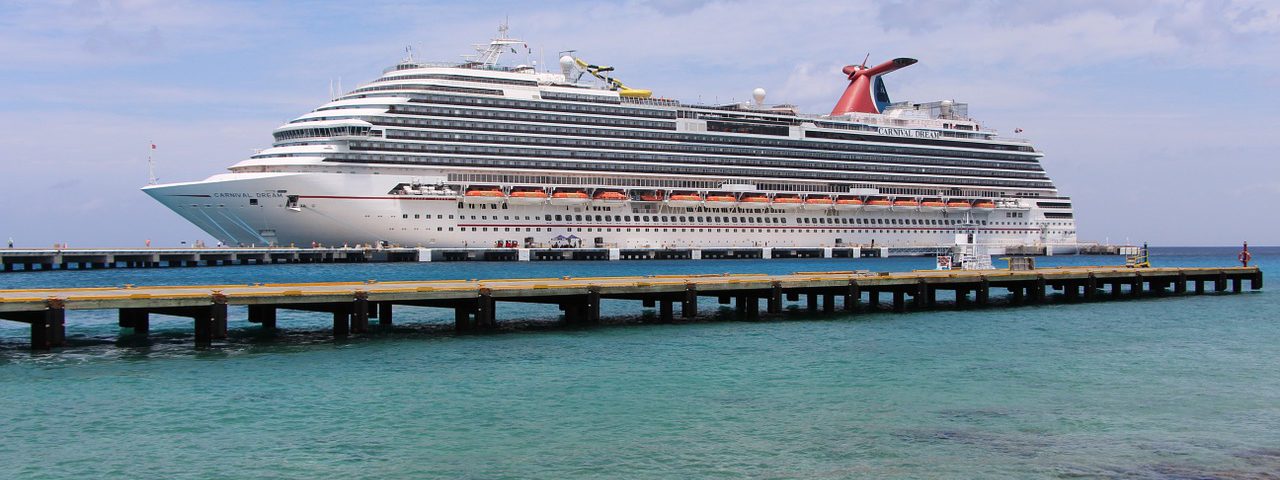New safety protocols combined with vaccinated passengers and crew bring hope to a sector of the travel industry that was decimated by the impacts of COVID-19.
After more than one year with most of their cruise ships docked, the global cruise lines are ready to completely sail again. Although new health measures have been implemented by the cruise operators, the application of some restrictions will not be the same for all passengers. The latest Operations Manual issued by the Centers for Disease Control and Prevention (CDC), less than a week ago, sets the roadmap for cruise companies in the COVID era. In the next paragraphs, I summarize the main changes and implications for both the cruise industry and everyone who is willing to go on a cruise in the next months.
Vaccines make a great difference.
One of the most important changes in the cruise travel’s comeback refers to vaccinated individuals. According to the CDC, ships with 95% (or more) of their crew and passengers fully vaccinated may advise them not to wear face coverings nor to maintain social distance in certain areas of the vessels. Also, these exemptions will be applicable in outdoor activities and when eating or drinking. Therefore, some of the CDC’s recommendations will be optional for ships with enough percentages of vaccinated people among their employees and customers.
On the other hand, vessels that do not reach the vaccination’s rate set by the CDC may have to arrange areas exclusively for both the passengers and members of the crew who have received all the needed jabs. This sparks quite a debate among travellers about the fairness of these measures. Just a few months ago, several countries expressed the unfairness of easing travel restrictions just for vaccinated travellers and not for either travellers who test negative or those who have had COVID in the past.
Cruise lines are ready.
The moment that all cruise operators were waiting for has arrived and it did not catch them by surprise. Companies like Royal Caribbean have already scheduled test cruises, with the CDC’s approval, including non-vaccinated passengers for the end of June. These ‘simulated cruises’ are a requirement for those cruise lines that decide to sail with both vaccinated and unvaccinated passengers. Test cruises will carry volunteers in voyages with a length varying from two days to seven and all the safety protocols will be under inspection. Embarkation and disembarkation processes, food service, shore excursions, or medical evacuations’ procedures will be analysed. With these trials, cruise lines aim to evaluate the effectiveness of their health measures at controlled capacities. However, it seems that some companies are slightly ahead of the rest. MSC Cruises, which resumed their operations in Europe in 2020, provides tests to all of their passengers as well as tracing bracelets, this last measure is applied by Royal Caribbean too. In the US, the most important market for the cruise industry, Celebrity Cruises received approval to resume operations by the end of June.
Different challenges to meet.
One of the main attractions of cruise ships is their food service, especially their buffets. The latest information seems to point out that buffets are not something of the past, even if cruise lines may be required to prioritize other options like outdoor food consumption or even room service. However, this will depend on the overall effectiveness of the health measures and the vaccination percentage of each vessel.
Another challenge that cruise companies may face affects their personnel. For example, and according to estimates, Norwegian Cruise Line may need to recruit and train nearly 18000 employees by the beginning of 2022. This is a daunting step, yet much needed to fully restart cruise operations. However, there are challenges on the demand side as well. For instance, how cruise lines will proceed towards certain market segments in the short term. There is a lot of uncertainty around allowing children onboard, as many vaccination programmes do not include them yet. Anyway, the final decision about this will depend on each operator as well as other external factors.
Where can I go to?
There are multiple options available for cruise lovers, with a bigger overall offer from June onwards. Local travellers can go on cruises to nowhere from Singapore. On the other side of the world, there are itineraries including Caribbean destinations although the Mediterranean seems to be, at this moment in time, the most popular region to go on a cruise with MSC Cruises leading the way. Some cruise lines, like TUI Cruises and Aida Cruises, include other European regions in their itineraries like the Canary Islands. Other itineraries that are attracting demand are domestic cruises around the UK and the US. To a lesser extent, bookings are growing to join cruises through far regions such as Alaska or Australia.
In conclusion, cruise ship travel is back. However, there is uncertainty around the industry and how it may respond to potential crises such as COVID outbreaks onboard. In my opinion, the overall cruise sector is well prepared to face any potential eventuality thanks not just to the test cruises that aim to examine the companies’ response but also to the experience they already have when dealing with these situations. I am pretty sure that lessons were learnt after some key events like the outbreak in the Diamond Princess.
Also, the industry has the passengers on its side. Many travellers have been waiting for the comeback of big cruise ships since 2020, and the demand forecasts show that people still want to enjoy cruises despite the pandemic. Cooperation between all stakeholders (cruise operators, passengers, crew, ports’ authorities, local governments…) is a must to ensure not just the safety of both passengers and crew, but the protection of all the communities of the destinations visited in the itineraries. If this can be achieved, the cruise industry will sail stronger and safer than ever.


